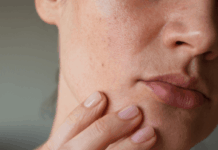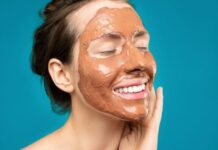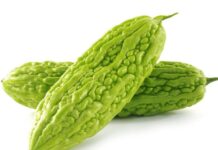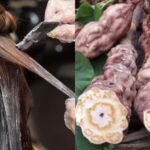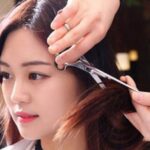Hair dyeing is a great way to change up your look, adding a youthful and trendy vibe. However, maintaining the vibrancy of dyed hair can be challenging, and proper hair care post-dyeing is crucial, especially when it comes to washing.
According to Jim Tse, a senior hairstylist with over 20 years of experience in Taiwan, using a regular shampoo can cause the dye to fade quickly or leave your hair feeling unclean. His secret to vibrant and long-lasting hair color? Using two different shampoos – one for cleansing and one for color protection.
Why Use Two Different Shampoos for Dyed Hair?
Preserving the vibrancy of dyed hair is a challenge, especially for colors like blue, red, purple, and gray, which tend to fade faster. An optimal way to prolong the life of your hair color is to use two different shampoos in your cleansing routine. This method involves understanding the role each shampoo plays in protecting the hair cuticle and minimizing color loss due to oxidation and rinsing.
Washing your hair twice with two different shampoos helps control oily scalp issues while ensuring optimal color retention.
The first shampoo, a regular cleansing shampoo, is used to remove excess oil, dirt, and styling product buildup from the scalp. As it doesn’t contain intense color-protecting ingredients, it ensures a thorough cleanse without leaving any residue, creating an ideal foundation for the next step.
After cleansing, the second shampoo, a color-protecting formula, takes center stage. These shampoos typically have a lower pH level, which helps seal the hair cuticle quickly after cleansing, thus reducing color washout. Additionally, they often contain moisturizing and antioxidant ingredients like proteins, amino acids, or plant extracts to maintain hair elasticity and health.

Using two shampoos helps mitigate the risk of color fading by controlling the chemical environment of the hair: the regular shampoo removes clogging factors without affecting hair color, while the color-protecting shampoo provides a defensive barrier against environmental factors.
Some Do’s and Don’ts for Washing Dyed Hair
1. Choosing the Right Shampoo:
Jim advises against using anti-hair loss or deep cleansing shampoos post-dyeing as they have a high alkaline content, which can affect color longevity. Deep cleansing shampoos have strong foaming agents that open up the hair cuticle. Instead, opt for sulfate and paraben-free formulas to minimize over-stripping dyed hair.
2. Considering Water Temperature:
After dyeing your hair, it’s best to wait for 48-72 hours before your first wash to allow the color molecules to settle. When you do wash, gently massage your scalp without vigorously rubbing your hair. For optimal results, maintain a moderate water temperature (below 40°C) to avoid excessive cuticle expansion and accelerated color fading.

In addition to the right products, controlling water temperature and washing frequency are key to optimizing dyed hair care.
3. Paying Attention to Washing Frequency:
Light-colored dyes like platinum, gray, blonde, pink, and light blue are the most prone to color washout, so it’s best to limit washing to 2-3 times a week. To maintain color vibrancy and avoid unwanted brassiness, use a purple shampoo or a shampoo specifically designed for bleached hair. These shampoos help neutralize excess warm tones and prolong the life of light hair colors.
For darker dyes like dark brown, black, dark blue, burgundy, or eggplant, while the color pigments are more resistant to fading, frequent washing can still lead to gradual color loss. To protect your color, aim for a washing frequency of 3-4 times a week, using a color-enhancing shampoo. Follow up with a conditioner designed for dyed hair after each wash to further safeguard against color loss.

Maintaining a reasonable washing frequency and using the right hair care products will not only protect your hair color but also ensure your locks stay healthy, soft, and shiny over time.
For hairstyles like ombre, balayage, or highlights, where the roots are usually darker and the ends are lighter, the lighter shades are more susceptible to color fading. Therefore, stick to washing 2-3 times a week and use shampoos specifically tailored to your hair color to ensure even color retention throughout your mane.
If you have an oily scalp or are frequently exposed to dusty environments, you may need to increase your washing frequency to 3-4 times a week to keep your scalp clean and fresh. However, it’s essential to use gentle, sulfate-free shampoos with a low pH to avoid damaging the hair cuticle and minimize color washout.
Why Do Many Middle-Aged Women Opt for Their Natural Hair Color, Even Though Dyeing Could Make Them Look a Decade Younger?
“Dye your hair and take a decade off your age.” This is the promise that many mature women seek when it comes to hair coloring. Yet, a growing number are forgoing the dye and even embracing styles typically associated with younger women. So, why are they abandoning the dye and opting to embrace their natural silver strands?

